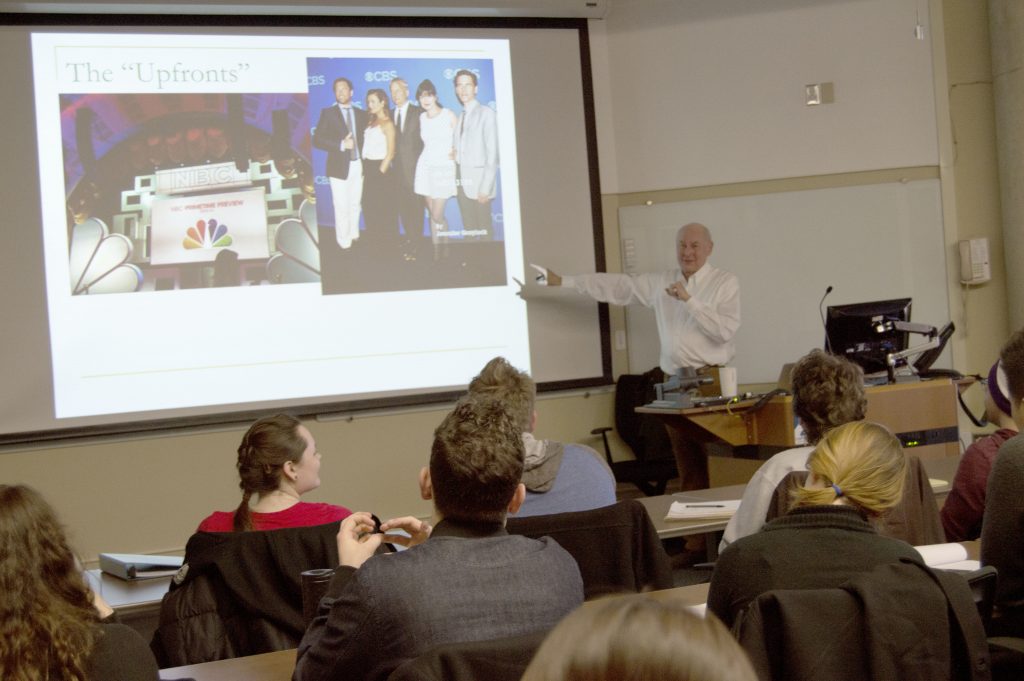
By Scotty Stieber
Whether you’re planning on starting your own business or working within an existing company, knowing your audience is key.
What kinds of constraints face certain industries, particularly within the fragmented entertainment industry? How are companies working to overcome these often tech-related hurdles? James Webster’s course “Understanding Media Markets: Users, Makers and Metrics” aimed to increase students’ awareness of the complex digital environment we live in today by identifying the role we, as consumers, play in shaping the marketplace for the producers of media and the myriad measurement systems in place that quantify our dynamic, ranging preferences.
Much of Professor Webster’s research revolves around media audiences and the social consequences involved with society’s growing, widespread media usage. He took his years of experience working as a consultant for audience measurement companies, like Nielsen, and made it the focal point throughout the quarter.
Both the distribution and the measurement sides of the entertainment industry were studied in great detail, providing a comprehensive view of the nuanced work that goes into content creation. Students read Webster’s book, The Marketplace of Attention: How Audiences Take Shape in a Digital Age, in addition to Blockbusters: Hit-Making, Risk-Taking, and the Big Business of Entertainment by Anita Elberse to dive into each area.
The course consisted of two take-home exams in essay form: the first exam concentrated on reviewing Elberse’s book, while the second stressed the application of concepts to support our understanding of the current and future state of mediated audiences. These assignments were built in preparation for the final group paper and presentation; a multifaceted project designed to analyze and assess a specific sector of the digital media world. With the interdisciplinary nature of the MSLCE program, the final project allowed students to research their own topic of interest separate from others, but various loose and strong connections could be drawn between each group’s material through the presentation component of the project.
Although not as glamorous or thrilling as the consumer’s perspective of the entertainment industry, seeing the other side of it certainly helps to appreciate it that much more. As media continue to transition into the digital era, new jobs, skills and knowledge begin to emerge, as well. The consumer really only sees the tip of the iceberg even though their information is what makes up the submerged part of it, as well.